Beasts of Burden: Exploring the Tradition of Animal Pulling Competitions
Animal pulling competitions, often referred to as “pulling contests,” are an engaging display of strength and endurance, showcasing the bond between humans and their animal counterparts. Traditionally involving livestock such as horses, oxen, and even dogs, these competitions have a deep-rooted history that spans cultures and continents. Participants gather to celebrate their animals’ strength while fostering community spirit and honoring agricultural heritage.
History and Origins
The history of animal pulling competitions can be traced back centuries. These events originated as practical showcases of an animal’s strength and ability to carry heavy loads, essential traits for farmers and communities reliant on livestock for labor. In agrarian societies, animals were the backbone of agricultural production, and their prowess in hauling loads was not just a measure of ability but also a reflection of the owner’s care and training methods.
Early Days: The Use of Beasts of Burden
The earliest documented instances of pulling competitions can be found in ancient civilizations. For instance, the Mesopotamians utilized oxen for plowing fields and transporting goods. Consequently, trial contests—and later formal competitions—began to occur as a way to demonstrate the animals’ capabilities. Historical accounts suggest that such events took place during harvest festivals and community gatherings, fostering competition while celebrating agricultural achievements.
Cultural Significance
In many cultures, these competitions became intertwined with local customs and folklore. For example, in Scandinavia, horse pulling was often part of winter festivals, immensely valued for its entertainment and social bonding components. In North America, particularly among rural communities, pulling contests became integral to fairs and agricultural exhibitions, highlighting the dual facets of tradition and competition. The animals themselves were often bred specifically for pulling strength, further enhancing their importance within the social fabric.
Evolution of Animal Pulling Competitions
Over the years, the evolution of these competitions has incorporated technological advancements and changes in agricultural practices. While the early days focused on the practical applications of an animal’s strength, contemporary events often spotlight entertainment and sportsmanship. The rise of heavy draft breeds—such as the Clydesdale and Percheron—has added a new dimension to these competitions, as breeders selectively enhance specific traits for these contests.
The modern landscape of animal pulling competitions features various formats, from weight pulling events where dogs or horses pull sleds to draft horse pulling competitions prominently observed at county fairs. Each type underscores the diversity within this tradition, illustrating the versatility of pulling across different contexts and animal types.
The Mechanics of Pulling Competitions
Understanding the mechanics of pulling competitions is crucial for appreciating their complexity and excitement. Each event adheres to specific rules and regulations set forth by governing bodies or associations, which ensures fairness and competitiveness.
Types of Pulling Competitions
-
Weight Pulling: Commonly associated with dogs, this format involves the animal pulling a weighted sled over a short distance. The distance covered and the maximum weight pulled are typically recorded, with the aim being to showcase the animal’s strength efficiently.
-
Draft Horse Pulling: This type features powerful horses with considerable muscle mass. The contested teams pull a sled loaded with progressively heavier weights. Spectators are often treated to the sight of massive horses straining against formidable loads.
-
Ox Pulling: This ancient tradition remains popular in various rural communities. Oxen, known for their endurance and strength, are entered into competitions where they must pull heavy loads over a designated distance, testing their skill and training.
The Competition Format
Competitions typically unfold in a series of heats, where animals compete against one another based on their strength and training. Participants often employ a strategical approach, choosing how much weight to add to their sleds or carts based on their animal’s training and conditioning. The competition not only showcases the raw power of the animals but also reflects the owner’s understanding of their capabilities and limitations.
Judging Criteria
Judges evaluate competitions based on factors like the animal’s form, the effort exerted, and the successful completion of the pulling distance. In some cases, the manner in which the animal approaches the pull—its technique and spirit—can have a substantial influence on the final scoring.
Animal Welfare Considerations
As animal pulling competitions gain popularity, significant discourse surrounding animal welfare has emerged. Critics argue that the stress of competition and the nature of training could lead to potential harm or distress for the animals involved.
Ethical Training Methods
Animal welfare advocates emphasize the importance of humane training methods that prioritize the health and well-being of the animals. Positive reinforcement is often highlighted as a vital approach to ensuring that animals remain in good health while being trained for competitions. Likewise, regular veterinary checks and proper nutrition are crucial elements that accountable owners adhere to.
Regulatory Bodies
In response to concerns regarding animal welfare, various organizations have started to enforce strict regulations governing animal pulling competitions. These regulations are designed to ensure humane treatment and set forth guidelines regarding the animals’ conditioning, weight-bearing limits, and recovery periods. They aim to protect the animals while still allowing for spirited competition.
Community and Cultural Impact
Animal pulling competitions are more than just exhibitions of strength; they are central to community life in many rural areas. They draw participants from various backgrounds, fostering camaraderie among attendees and promoting agricultural literacy.
Social Gatherings and Festivals
Competitions often coincide with local fairs, festivals, or agricultural exhibitions, transforming them into lively social events. Participants and spectators unite to celebrate their agricultural heritage, share stories, and foster community spirit. In many cases, these events promote local businesses, as vendors capitalize on the influx of visitors, offering refreshments, merchandise, and crafts.
Bridging Generations
For many families, pulling competitions serve as a rite of passage, connecting generations of livestock owners and enthusiasts. Parents often pass down knowledge and training techniques to their children, ensuring that the tradition continues. This generational tie adds depth to the competition, embodying the blend of history, culture, and familial legacy.
Global Perspectives on Animal Pulling
While animal pulling competitions are rooted in agrarian traditions, they have taken on distinct forms around the world. Each culture has adapted these events based on local customs and practices, resulting in a rich tapestry of styles.
North America
In North America, particularly within rural and farming communities, pulling events have become prominent features of county fairs. For example, the American Pulling Association and similar organizations promote and standardize these events, accommodating various breeds and weight classes. Such competitions not only showcase the skills of the animals but also highlight and preserve agricultural traditions amongst diverse communities.
Europe
European countries have long-standing traditions of pulling competitions, particularly in Scandinavia and Eastern European nations. In these places, the festivities surrounding pulling contests often include cultural performances, farmers’ markets, and traditional food stalls, enhancing the community experience and promoting local culture.
Asia
In Asian countries, animal pulling competitions often take on unique characteristics tied to local customs. For instance, in some regions of India, pulling competitions might incorporate elements of regional dance and music, enhancing the cultural significance of the event. These contests also reflect local agricultural practices, emphasizing the relationship between the communities and their land.
The Future of Animal Pulling Competitions
As society continues to evolve, so too will animal pulling competitions. The rise of technology, shifting consumer preferences, and increasing awareness around animal welfare will inevitably impact the tradition.
Incorporating Technology
The integration of technology into competitions—such as digital scoring systems, live-streaming events, and improved conditioning techniques—could enhance the spectator experience while preserving the integrity of the competition. This evolution may present unique opportunities for attracting new audiences and fostering interest in agricultural traditions.
Addressing Animal Welfare
As public scrutiny over animal welfare increases, event organizers and participants will need to prioritize the humane treatment of animals. Striving for transparency and adopting best practices in training and care will not only boost public perception but also ensure the long-term sustainability of pulling competitions.
Promoting Agricultural Education
With growing interest in sustainability and local food sourcing, animal pulling competitions can offer educational opportunities for younger generations. Engaging programming that emphasizes the role of animals in agriculture and the importance of sustainable practices will help cultivate interest in these traditions while promoting responsible stewardship of the land.
Conclusion
Animal pulling competitions represent a unique blend of history, culture, and community spirit. As “beasts of burden,” these animals not only serve as reminders of our agricultural past but also continue to play a crucial role in connecting people across generations. While the landscape of these competitions is ever-evolving, the underlying themes of camaraderie, strength, and shared traditions will undoubtedly persist.
As we celebrate these beloved competitions, it is essential to prioritize the welfare of the animals that make them possible, ensuring that they are treated with the respect and care they deserve. Embracing technology and educational programming will foster their growth while keeping the spirit of these remarkable events alive for future generations.
In essence, animal pulling contests are much more than mere competitions; they are a celebration of heritage, a showcase of animal capabilities, and a unifying force within communities. By understanding and respecting their significance, we can appreciate the ongoing legacy of these distinguished traditions, ensuring that they remain a cherished part of our cultural tapestry for years to come.
References
- [Modern Footnote Source] 1 (Details regarding regulations and welfare considerations can be found through various governing bodies of pulling competitions, such as the American Pulling Association and international counterpart associations.)
- [Modern Footnote Source] 2 (Research studies on animal behavior and training methods emphasize the significance of humane practices, providing insight into effective training techniques that prioritize animal welfare.)
- [Modern Footnote Source] 3 (Historical accounts and cultural studies illustrate the deep-rooted significance of animal pulling contests in various societies, tracing the evolution of these traditions and their socio-cultural implications.)
- [Modern Footnote Source] 4 (Interviews with participants and community leaders shed light on the contemporary state of animal pulling competitions, revealing their lasting impact on local culture and community cohesion.)
-
Additional sources and studies would provide specificity and depth to the various aspects discussed in this article, providing a comprehensive view of the tradition of animal pulling competitions.
This comprehensive article serves as a primer on the multifaceted world of animal pulling competitions. For a deeper dive into specific events or participant experiences, further research can be conducted.

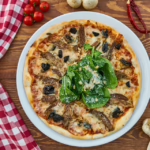






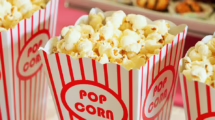






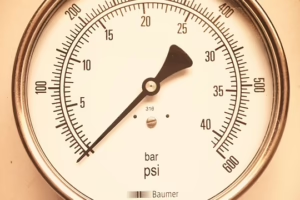
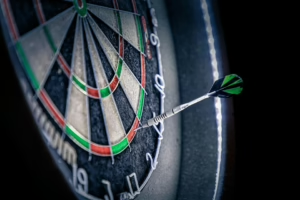
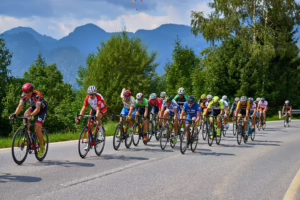
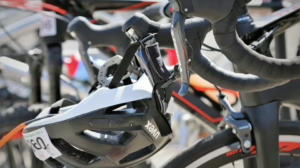
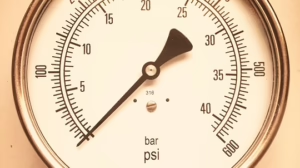





Add Comment